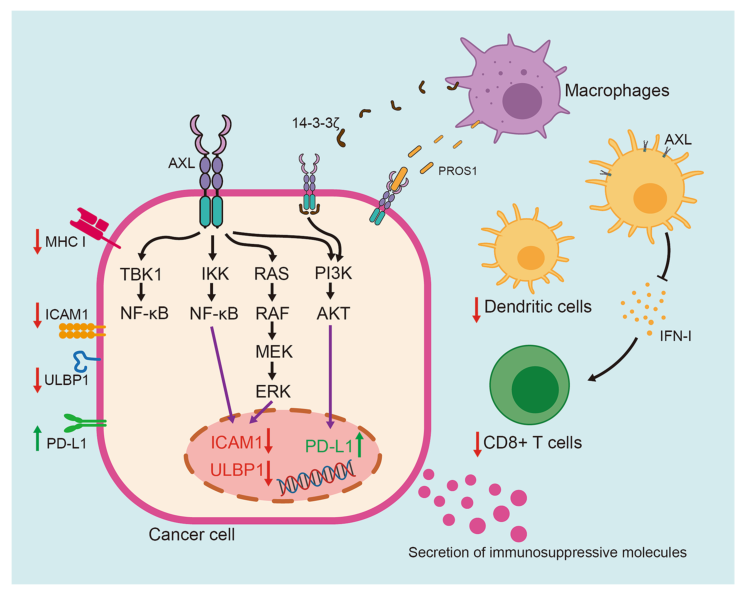Cancer continues to be a leading cause of death worldwide, with its incidence and burden of mortality steadily on the rise. Despite significant advancements in research and development of cancer treatment strategies such as targeted therapies and immunotherapy, drug resistance remains a major hurdle to effective cancer interventions. Drug resistance can be intrinsic or acquired, reflecting the consequences of various genetic and epigenetic changes in cancer cells. Urgent measures are therefore needed to identify new treatment approaches targeting both intrinsic and acquired resistance mechanisms.
Recently, researchers from Central South University published a comprehensive review titled “AXL in cancer: a modulator of drug resistance and therapeutic target” in the Journal of Experimental & Clinical Cancer Research, shedding light on the role of AXL as a regulator of drug resistance and a potential therapeutic target in cancer.

AXL belongs to the TAM (Tyro3, Axl, and MerTK) receptor tyrosine kinase family, and its aberrant expression is associated with clinical pathological features and poor prognosis in cancer patients. Increasing evidence supports the role of AXL in cancer initiation, progression, as well as drug resistance and treatment tolerance.
Recent studies have indicated that reducing AXL expression can attenuate drug resistance in cancer cells, suggesting that AXL may represent a promising target for anticancer drug therapies. This article provides an overview of AXL’s structure, regulation, activation mechanisms, and its expression patterns in tumor drug resistance. Furthermore, the researchers discuss the diverse functions of AXL in regulating cancer resistance and the potential of AXL inhibitors in cancer treatment.
With the development of nanomedicine, nanoparticle-based drug delivery systems (NDDS) have shown great promise in cancer therapy. NDDS not only enhance the solubility of chemotherapy drugs and enable the delivery of higher drug doses but also reduce the toxicity of systemic chemotherapy to normal tissues. Leveraging nanocarriers to deliver AXL inhibitors could be an effective strategy to reduce their side effects and enhance their therapeutic efficacy. However, there are still numerous challenges to be addressed before nanotechnology can achieve widespread clinical application.
In conclusion, targeting AXL presents a promising new strategy with a broad range of biological effects and functional diversity, holding the potential to delay or eliminate drug resistance. With improvements in AXL-targeted drugs and a deeper understanding of AXL resistance mechanisms, inhibiting AXL holds promise as a valuable strategy for the treatment of cancer patients.
Reference
1. Tang, Yaoxiang, et al. “AXL in cancer: a modulator of drug resistance and therapeutic target.” Journal of Experimental & Clinical Cancer Research 42.1 (2023): 148.
